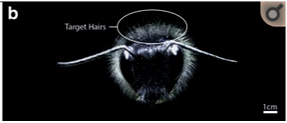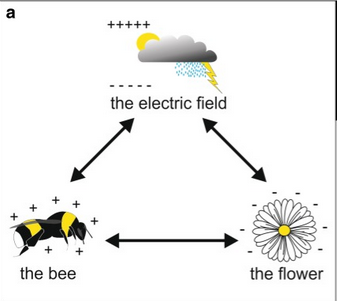Detection
of the Forces
Electroreception - This is the ability of an organism to detect external electrical forces. It had since been discovered in underwater environments with animals like fish and amphibians, but has just been proven, even more interestingly, in aerial environments with bees.
In aquatic organisms, electroreception relies on the direct transmission of stimulus from the conductive water to their nervous system. For land animals in air, which is an electrically resistive medium, the detection of this electric field must require a different sensory method. Bees have been proven capable of detecting weak electric fields using sensory hairs on their bodies. These hairs are mechanically deflected by applied stimulation, which causes a neural response, sending information about the flowers to their central nervous system. In this way, bees can determine which flower will be rewarding by sensing the weak electrical field around them. Information like radial geometry and even color are interpreted by bees in this manner, making finding and pollinating flowers much easier.

(image credit: The bee, the flower, and the electrical field, https://www.ncbi.nlm.nih.gov/pmc/articles/PMC5599473/)
The physics behind this concept can be explained by atmospheric electricity. The atmospheric potential gradient is the vertical electric field that exists between the Earth and the upper atmosphere. The electrical field strength above Earth’s surface is around 100V/m, which is maintained by the action of electrical storms taking place around the world. The current is balanced by lightning strikes, which creates what we call the global atmospheric electric circuit. Because the charge in the air is positive, the surface of the Earth has a negative charge. And because flowers are on the surface of the Earth, they too have a negative charge. The bees, flying through the air, accumulate a positive charge. The presence of these electrical forces is what gives bees the ability to sense flowers and discriminate between rewarding and unrewarding flowers.

|